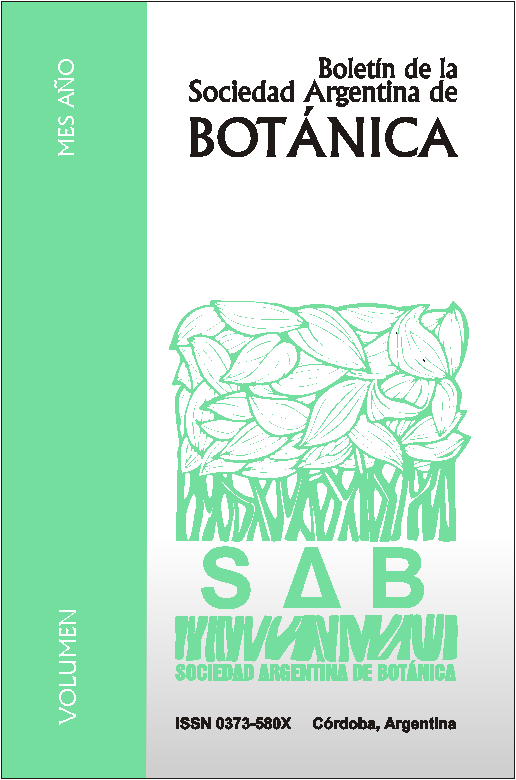Melissopalynological contribution to the knowledge of the honey flora in a sector of the Phytogeographic Chaquenian Province, Argentina.
DOI:
https://doi.org/10.31055/1851.2372.v49.n4.9889Keywords:
Flora melífera, floración, néctar, polen, miel, región chaqueña.Abstract
Melissopalynological contribution to the knowledge of the honey flora in a sector of the Phytogeographic Chaquenian Province, Argentina. The honey flora of a sector of the Occidental y OrientalChaco phytogeographic province, Argentina, was studied. Availability of plant flowering, considering the botanical origin of pollen grains contained in honey samples was investigated. Plant specimens and honey samples were collected in 20 apiaries during spring and summer of years 2004 to 2007. The flowering period in the studied region is larger than in other Argentine an regions, extending almost the entire year. Field records revealed the presence of 282 plants species belonging to 65 Angiosperms families being Fabaceae and Asteraceae the most well represented. Two flowering peaks were detected, one between September and December, and the other from February until late March. The first peak of flowering involves a larger number of plant species than the second. Major flowering contribution was produced bynative species; woody plants are dominant in spring and herbaceous ones in summer. Although 118 pollen types were identified in the honey samples, the main nectar sources came from a few plants belonging to Asteraceae, Anacardiaceae, Arecaceae, Fabaceae, Rhamnaceae and Zygophyllaceae.Downloads
Issue
Section
License
Provides immediate and free OPEN ACCESS to its content under the principle of making research freely available to the public, which fosters a greater exchange of global knowledge, allowing authors to maintain their copyright without restrictions.
Material published in Bol. Soc. Argent. Bot. is distributed under a Creative Commons Attribution-NonCommercial-ShareAlike 4.0 International license.





